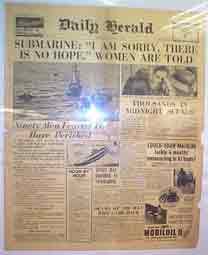themes
themes
Page 3
1 | 2 | 3 | 4
The World Wars

Remembrance Day
Kibble’s archive contains numerous references to boys leaving Kibble and enlisting in the armed forces. Many went on to see active service in both world wars. We have now compiled a roll of the boys who enlisted from Kibble during WWI.
Many more of the boys who went from Kibble to the war were wounded or killed in action, as recorded in our archive. These included one who was reported killed while trying to escape from an Italian POW camp. Another was more fortunate, surviving a torpedo attack in the Atlantic while serving as a ship’s cook on the King Gruffyd.
One Kibble boy wrote on a bible in Church in 1933:
‘Came –27/3/29, Leave – 10/9/33
Time done – 4 years, To do – 6 months.
Full Time – 4 years and 6 months of Hell and Misery’.
This same young man visited Kibble in May 1944. By that time he was an SAS parachutist with service in China, Singapore, Burma, India, Persia and Egypt. He had been awarded an 8th Army Medal. Despite his harsh words in 1933, his return visit ten years later suggests that he retained some attachment to Kibble.
William Orrock was discharged from Kibble in June 1933. He first worked as an apprentice plater then joined the Royal Navy as a submariner. His Kibble record has a press clipping attached. This reports that he was killed in the sinking of the submarine HMS Thetis. His death, however, occurred much closer to home than the others’ and was due to a tragic accident rather than to enemy action. The Thetis disaster happened in 1939, just forty miles from Birkenhead where it was built, costing the lives of ninety-nine men. A combination of factors brought about the disaster. During her maiden voyage, a first attempt to dive failed because, for some reason, the submarine was too light. When the decision was taken to allow seawater into the torpedo tubes to increase the vessel’s weight, it was without the knowledge that the outer torpedo doors were already open and filled with water. Due to a fault with a test tap, they believed that it was safe to open the inner doors. Of course, water immediately rushed in, causing the submarine to nose-dive. Bad luck, bad timing and poor judgement conspired to thwart rescue attempts. The bodies of those who suffocated, including engineers from Cammell Laird shipyard, remained on the submerged vessel for four months before she was salvaged from the bottom of the bay.
